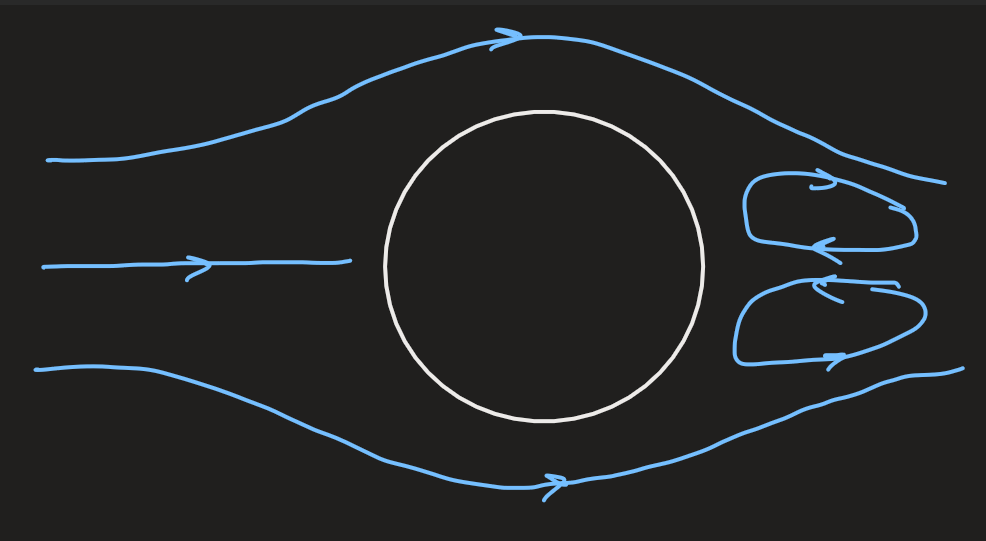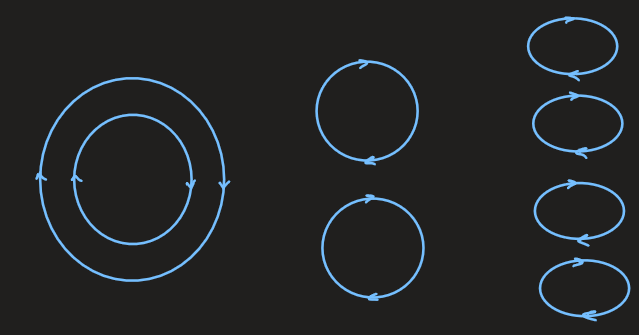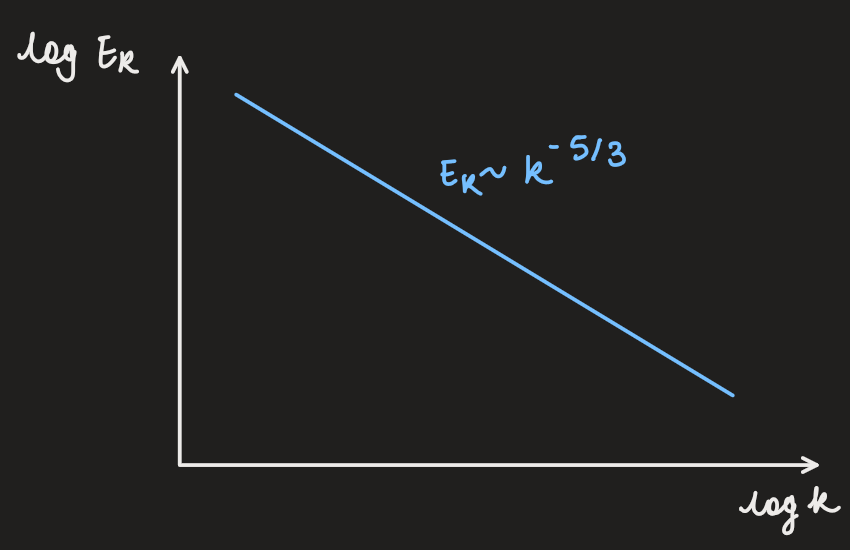PX284 - M1 - turbulence

- considering two symmetric vortices rotating oppositely
- after a while, the flow becomes asymmetric (eg: thermal fluctuations)

- a street of vortices, known as von karmen street, is formed
- the vortices rotating in alternate sense are shed from either side of the cylinder
- the size of each vortex near the cylinder is similar to the diameter of the cylinder
- the parameters of the process:
diameter of cylinder (and vortices) flow speed upstream time period of vortex shedding
- a dimensionless combination of these parameters can be formed, which is called the 'storuhal number':
- for a very broad range of applications (air, water, mercury, plasma),
- this is a very robust feature of the oscillating vortex shedding phenomenon
- as vortices have mass and momentum, the periodic vortex shedding imparts a force on the cylinder

- the force changes direction periodically
- therefore, the cylinder oscillates in the direction perpendicular to the flow velocity

- further downstream, the vortices are observed to break up into smaller vortices, in a process called 'nonlinear cascade'
- they can also collide and merge, giving a 'gas' or a 'soup' of vortices of different sizes, giving rise to turbulence
- it is a dynamic process, but if a snapshot is taken and the sizes of the vortices are plotted as a histogram,
- the fourier transform in spatial domain (s):
where,
- the energy of vortices against the wavelength in a logarithmic plot:

- this is called the kolmogorov spectrum of turbulence